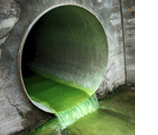Insights
 How Your Clients Can Reduce Pollution Liability
How Your Clients Can Reduce Pollution Liability
January 3, 2023
Pollution is one of the greatest environmental crises facing the world. According to statistics, pollution affects more than 100 million people and contributes to deaths in many places. Although individuals can certainly take steps to minimize their role in this problem, companies cause the most pollution. In addition to the apparent stress that this causes the environment, pollution liability can quickly become a serious legal issue for businesses. If your clients are wondering how to reduce pollution liability, you can help them improve their environmental practices with the following four tips.
Minimize Environmental Risk With Recycling
Recycling is an effective defense against pollution — especially when enacted on a large scale by significant companies. It is often one of the best places to start for businesses that want to reduce their pollution liability and positively impact the environment. Your clients can roll out a company-wide recycling initiative by placing recycling receptacles throughout the premises. An awareness campaign should accompany this to inform employees about the new effort. Businesses should then contract with a recycling company to minimize potential pollution.
Properly Store Any Chemicals and Hazardous Materials
Chemical pollution is among the most common and treacherous forms of pollution. It can disrupt local ecosystems, kill wildlife, and poison the soil. These outcomes may be grounds for litigation if the pollution negatively impacts nearby residents. Preventing chemical pollution is thus essential to minimizing liability, and storing these substances properly is the easiest way to do so. Companies should store any chemical or hazardous material in a secure container that is clearly labeled. The container should also feature a noncorrosive material so it is less susceptible to leaks.
Identify Actions That May Contribute to Pollution
Sometimes pollution liability comes from unexpected sources. For example, a company may contribute to air pollution as a byproduct of production processes. It is essential for businesses to thoroughly assess all potential sources of pollution by conducting an environmental audit. It may require a specialist who can evaluate the company and its practices and generate a report identifying the most significant pollution liabilities. Identifying major pollution risks is the first step toward eliminating them.
Develop an Environmental Task Force to Address Problems
Once your clients have conducted an audit and identified the most significant sources of pollution, they should develop an environmental task force to tackle these issues and mitigate the company’s risk. This task force should include employees and leadership from within the company, and it should also include environmental consultants who can offer expert advice to your client. The task force should create a clear action plan to eliminate potential pollution and develop policies for long-term sustainability and environmental advocacy. ◼
